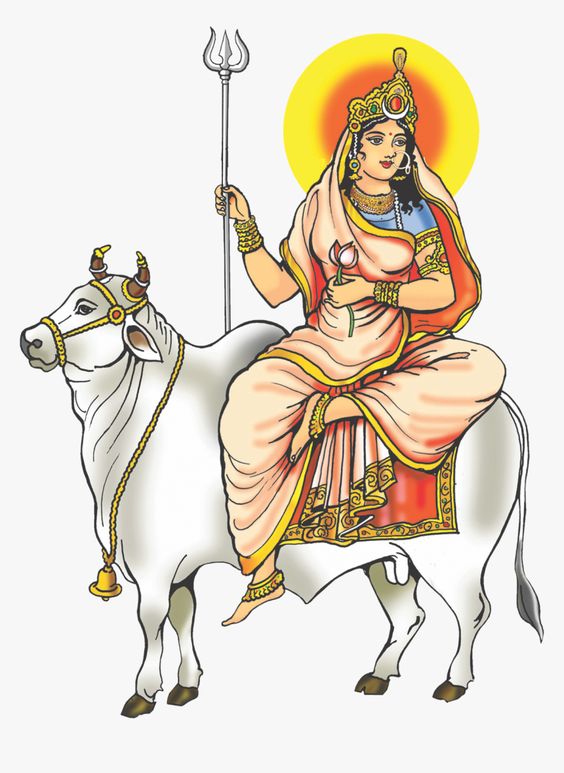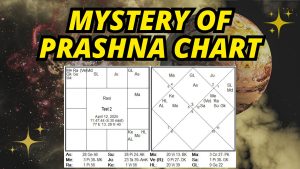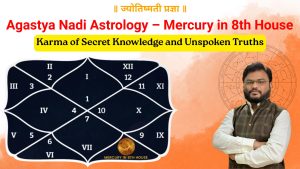22
MAR 2023
Celebration on the Occasson of Navratri 22 March 2023
Navratri is the nine night’s long festival of worship of the Goddess Durga – the warrior goddess. This year, we celebrate Navratri in 2023 on 22 March. Navaratri is celebrated for nine days and nights. On each day, we celebrate one of the nine manifestations of Durga, such as Chhinnamastika, Muhurta and Aarti.

The ninth night is known as Aashadhalaya or Aashad or Durgabhishekam. It is believed that on this day, Lord Durga drinks from the ocean, which is a symbol of her victory over evil forces and death itself. Navaratri is the nine night’s festival that celebrates the victory of good over evil. It is a religious festival and Hindus celebrate it with great enthusiasm.
The people, especially women, prepare different types of food and sweets to worship their goddess. The Hindus also perform religious rituals and get blessings from their gods. During this Navaratri festival, people light diyas and candles, wear new clothes and pray to their gods for prosperity and happiness in their life. They also submit poojas to seek their wishes.
Navratri is one of the most prominent festivals in India and has been celebrated since Vedic times. It marks the victory of good over evil. This article summarizes some interesting Navratri facts that you may not know about:
1. Navaratri is considered as a very auspicious time for marriages because it brings new life into the world and prepares us for success in our lives.
2. The word Navaratri comes from Sanskrit meaning nine nights or nine forms of energy or power that keep creating and destroying this universe on a daily basis.
There are nine manifestations of Goddess Durga that are worshipped on each day of Navratri and the bhog or prasad that is specially prepared for them to seek their blessings. As each avatar represents a distinct characteristic of Goddess Durga, different bhog is offered to her in various forms.
The nine forms of Mata Durga which is worshipped during Navratri are: Shailputri on Pratipada; Brahmacharini on Dwitiya; Chandarghanta on Tritiya; Kushmanda on Chaturthi; Skand Mata on Panchami; Katyayani on Shashthi; Kaalratri on Saptami; Mahagauri on Ashtami and Siddhidatri on Navami.
There Are Nine Manifestations of Goddess Durga That Are Worshipped On Each Day of Navratri
- Goddess Shailputri
Goddess Shailputri is one of the nine forms of Goddess Durga and is worshipped on the first day of the Navratri festival. She is also known as “Shailaputri” which means the daughter of the mountains. According to Hindu mythology, Shailputri is the reincarnation of Goddess Sati, the first wife of Lord Shiva. She is depicted with two hands, holding a trishul (trident) in one hand and a lotus flower in the other. She rides a bull, which represents power and strength.

During the Navratri festival, devotees worship Goddess Shailputri to seek her blessings for good health, wealth, and prosperity. It is believed that she blesses her devotees with courage, determination, and success in their endeavors. By worshipping Goddess Shailputri, people seek to reconnect with nature and acknowledge its importance in their lives.
2 Goddess Brahmacharini
Goddess Brahmacharini is the second form of Goddess Durga, who is worshipped on the second day of Navratri, a Hindu festival celebrated for nine nights. The word “Brahmacharini” means a female who is a devotee of Lord Brahma, the creator of the universe.

In Hindu mythology, Brahmacharini is depicted as a young woman who is clad in white clothes and holding a japa mala (prayer beads) and a kamandalu (water pot). She is known for her penance, sacrifice, and austerity. She is also believed to symbolize love, loyalty, and knowledge.
On the second day of Navratri, devotees offer white flowers, milk, and fruits to the Goddess Brahmacharini, and recite mantras and hymns in her praise. The worship of Goddess Brahmacharini is believed to cleanse the mind, body, and soul and bestow blessings upon the devotees
3 Goddess Chandraghanta
Goddess Chandraghanta is the third form of Goddess Durga, worshipped during the nine-day festival of Navratri. She is depicted as having a half-moon (Chandra) shaped like a bell (Ghanta) on her forehead, which gives her the name Chandraghanta.

The story behind her appearance is that during the battle between the gods and demons, a loud sound of a bell was heard, which frightened the demons. To calm their fears, Goddess Parvati transformed into Goddess Chandraghanta and appeared before them, wearing a bell-shaped moon on her forehead. The sight of her scared the demons even more and they fled from the battlefield. Devotees of Goddess Chandraghanta believe that by worshipping her, they can receive her blessings of protection, courage, and strength.
4 Goddess Kushmanda
Goddess Kushmanda is the fourth form of Goddess Durga, Goddess Kushmanda is a Hindu goddess who is mainly worshipped during the Navratri festival. According to Hindu mythology, she is believed to be the creator of the universe, and her name, “Kushmanda,” means “the cosmic egg.”

Goddess Kushmanda is depicted as having eight arms, and she is often shown riding a lion or a tiger. In her hands, she holds various weapons and items, such as a bow and arrow, a lotus, a mace, and a discus. She is also said to radiate a glowing aura or energy, which represents her power and radiance. During Navratri, devotees of Goddess Kushmanda offer her prayers and perform rituals to seek her blessings. It is believed that worshipping her can help one overcome obstacles and difficulties in life, and bring prosperity and success.
In addition to her role as the creator of the universe, Goddess Kushmanda is also associated with the element of fire and is believed to have the power to purify and cleanse the soul.
5 Goddess Skandamata
Goddess Skandamata is the Fifth form of Goddess Durga, who is worshipped during the Navratri festival. Skandamata is usually depicted with four arms, seated on a lotus or riding a lion, with her son Skanda or Kartikeya in her lap. Skanda is also known as Murugan, Subramanya, Shanmukha, or Kumara, and is the Hindu god of war.

The word ‘Skanda’ means ‘one who attacks’ or ‘spills out’, and ‘mata’ means mother, hence Skandamata means the mother of Skanda. Skandamata is also known as Padmasana or Kamalasana Devi, as she is usually depicted seated on a lotus flower.
Skandamata is believed to bless her devotees with prosperity, peace, and strength. It is also believed that worshipping her can help overcome obstacles and challenges in life. Her worship is also believed to help remove negative energies and protect from evil forces.
During Navratri, the fifth day is dedicated to Skandamata, and devotees perform special puja and offer flowers, fruits, and other items as offerings. The mantra associated with Skandamata is:
“ॐ देवी स्कन्दमातायै नमः॥”
(Om Devi Skandamatayai Namah)
6 Goddess Katyayani
Goddess Katyayani is the Sixth form of Goddess Durga, worshipped during the Navrat ri festival in Hinduism. She is believed to be the sixth manifestation of the powerful Goddess Durga and is also known as the Warrior Goddess. According to Hindu mythology, she was born as the daughter of Sage Katyayana and took birth on the earth to defeat the demon Mahishasura.

Goddess Katyayani is depicted with four arms, holding a sword, a lotus, and two other weapons, and riding a lion. She is considered to be the epitome of courage, strength, and valor, and is believed to bestow blessings on her devotees with prosperity, happiness, and success.
During the nine day Navratri festival, the worship of Goddess Katyayani is observed on the sixth day. It is believed that by praying to her with devotion and performing puja, devotees can receive her blessings and overcome any obstacles in their lives.
7 Goddess Kaalratri
Goddess Kaalratri is the Seventh form of Goddess Durga, who is widely worshipped in India and Nepal. “Kaal” means time and “ratri” means night, so Kaalratri is often translated as “the one who is black as night”. She is considered to be one of the fiercest forms of Durga, and is often depicted with a dark complexion, wild hair, and multiple arms holding weapons.

According to Hindu mythology, Kaalratri is believed to have emerged from the forehead of goddess Durga during the battle with the demon Mahishasura. Her role was to annihilate the demon army and protect the world from evil forces. She is also believed to protect her devotees from all kinds of harm and danger.
Kaalratri is worshipped during the festival of Navratri, which is celebrated over nine days in honor of the nine forms of Durga. Her worship is said to bring courage, strength, and protection to her devotees.
8 Goddess Mahagauri
Goddess Mahagauri is the eight form of Goddess Durga, worshipped during the Navratri festival. She is considered to be the eighth form of the goddess and is worshipped on the eighth day of Navratri.

Mahagauri is depicted as a beautiful and fair complexioned goddess, wearing white clothes and riding on a bull. She has four arms, with two hands holding a trident and a tambourine, while the other two hands are in the gestures of granting blessings and fearlessness.
According to Hindu mythology, Mahagauri is believed to have undergone severe penance to obtain Lord Shiva as her husband. Her penance was so intense that her body became dark and covered with dirt. Lord Shiva, impressed by her devotion, cleaned her body with the water of the holy river Ganges, and her body regained its fair complexion. Thus, she is known as Mahagauri, which means extremely white.
Mahagauri is worshipped for blessings of purity, serenity, and prosperity. Devotees also seek her blessings for the successful completion of their endeavors and the removal of obstacles from their lives
9 Goddess Siddhidatri
Goddess Siddhidatri is the Ninth form of Goddess Durga, Goddess Siddhidatri is a Hindu goddess who is worshipped on the ninth day of the Navratri festival, which is a nine-day celebration dedicated to the divine feminine. She is regarded as one of the forms of Goddess Durga, the divine mother who represents the power of creation, preservation, and destruction.

According to Hindu mythology, Goddess Siddhidatri is believed to possess all the eight supernatural powers or siddhis, which include anima, mahima, garima, laghima, prapti, prakamya, ishita, and vashita. These powers are said to be acquired through intense spiritual practice and can be used to attain various supernatural abilities.
In her iconography, Goddess Siddhidatri is depicted seated on a lotus flower, holding a mace, a lotus, a conch shell, and a discus. She is often shown with four arms, and sometimes with eight arms, each holding a different object symbolizing her power and divine attributes.
Devotees worship Goddess Siddhidatri with great devotion and seek her blessings for spiritual and material prosperity, success, and fulfillment of their desires. It is believed that her worship helps to remove obstacles and bring good fortune in all aspects of life.
During Navratri, a Durga Saptashati yagya can be performed to honor the goddess and seek her blessings.
To perform a Durga Saptashati yagya, a fire pit or altar is prepared, and offerings such as ghee, grains, and herbs are placed into the fire while mantras from the Devi Mahatmya are recited. The yagya is performed by a trained priest or pandit, and the entire process can take several hours or even days.
The purpose of performing a Durga Saptashati yagya during Navratri is to invoke the blessings of the goddess and seek her protection and guidance. It is believed that performing this Durga Saptashati yagya with devotion and sincerity can help remove obstacles, negativity, and suffering from one’s life and bring about spiritual growth and prosperity.
What is Nine Manifestations of Goddess Durga? – By Astrologer Vinayak Bhatt
Read More Navaratri Special Article











